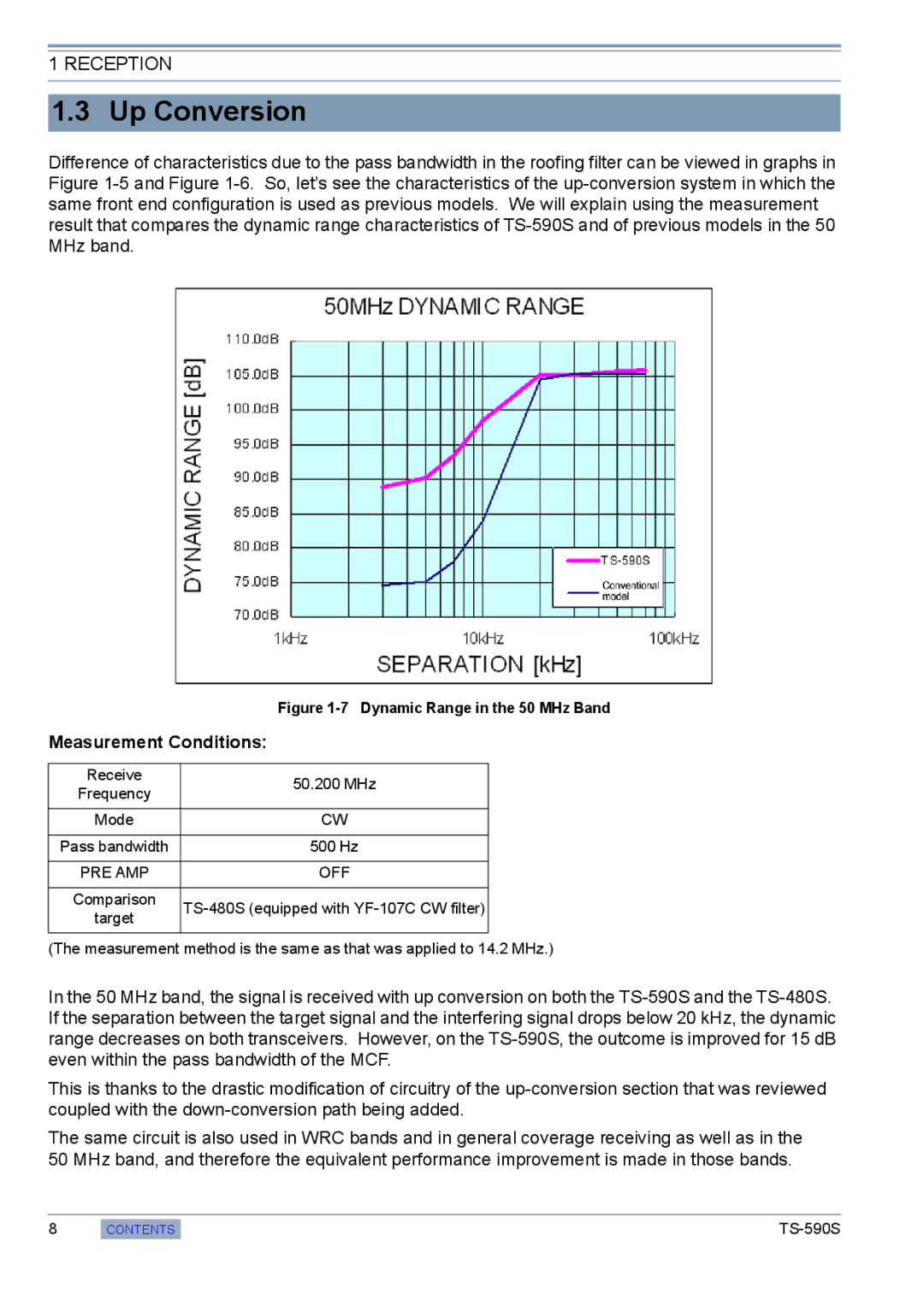
1 RECEPTION
1.3 Up Conversion
Difference of characteristics due to the pass bandwidth in the roofing filter can be viewed in graphs in Figure
Figure 1-7 Dynamic Range in the 50 MHz Band
Measurement Conditions:
Receive | 50.200 MHz | |
Frequency | ||
| ||
|
| |
Mode | CW | |
|
| |
Pass bandwidth | 500 Hz | |
|
| |
PRE AMP | OFF | |
|
| |
Comparison | ||
target | ||
| ||
|
|
(The measurement method is the same as that was applied to 14.2 MHz.)
In the 50 MHz band, the signal is received with up conversion on both the
This is thanks to the drastic modification of circuitry of the
The same circuit is also used in WRC bands and in general coverage receiving as well as in the 50 MHz band, and therefore the equivalent performance improvement is made in those bands.
8
CONTENTS
